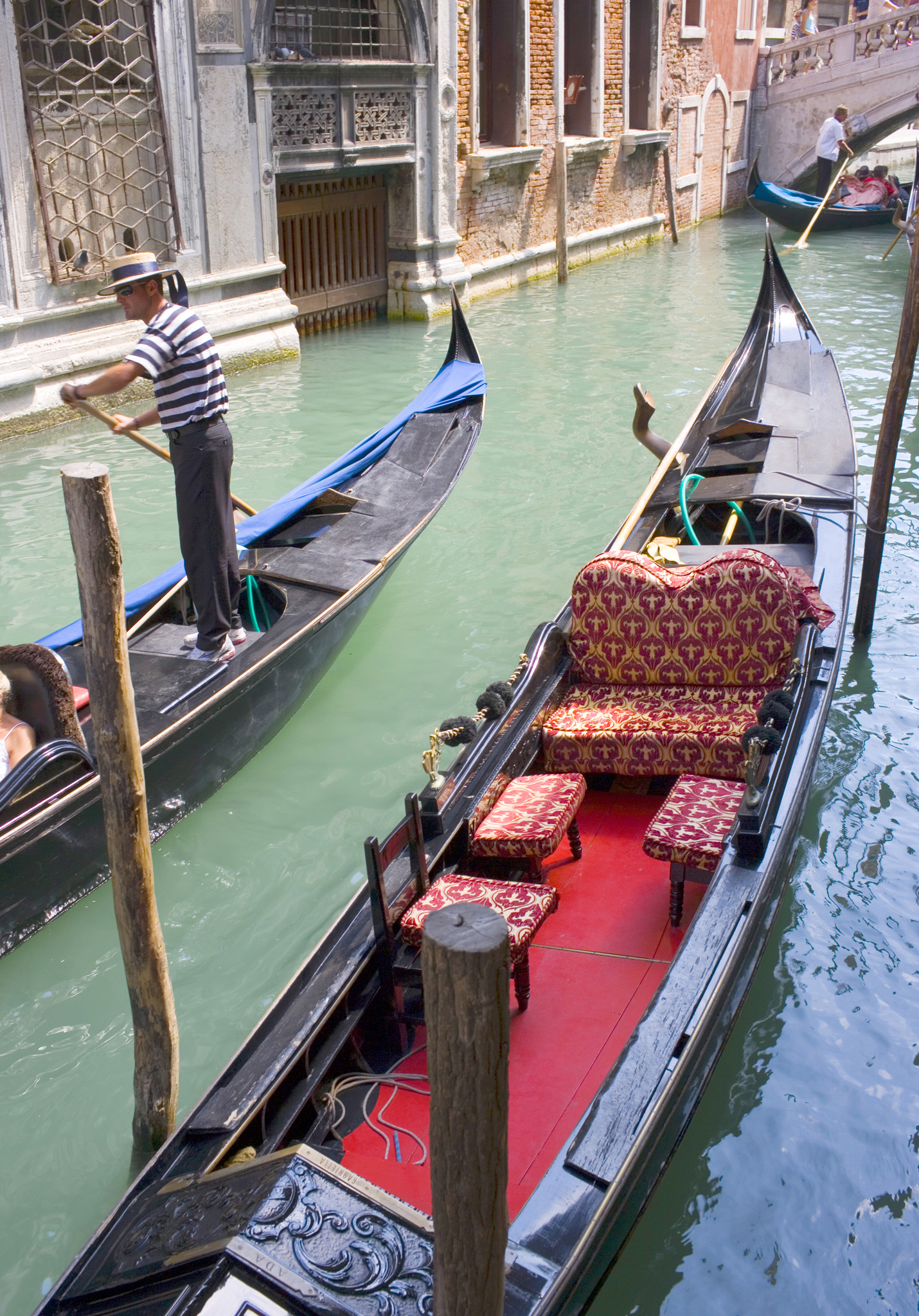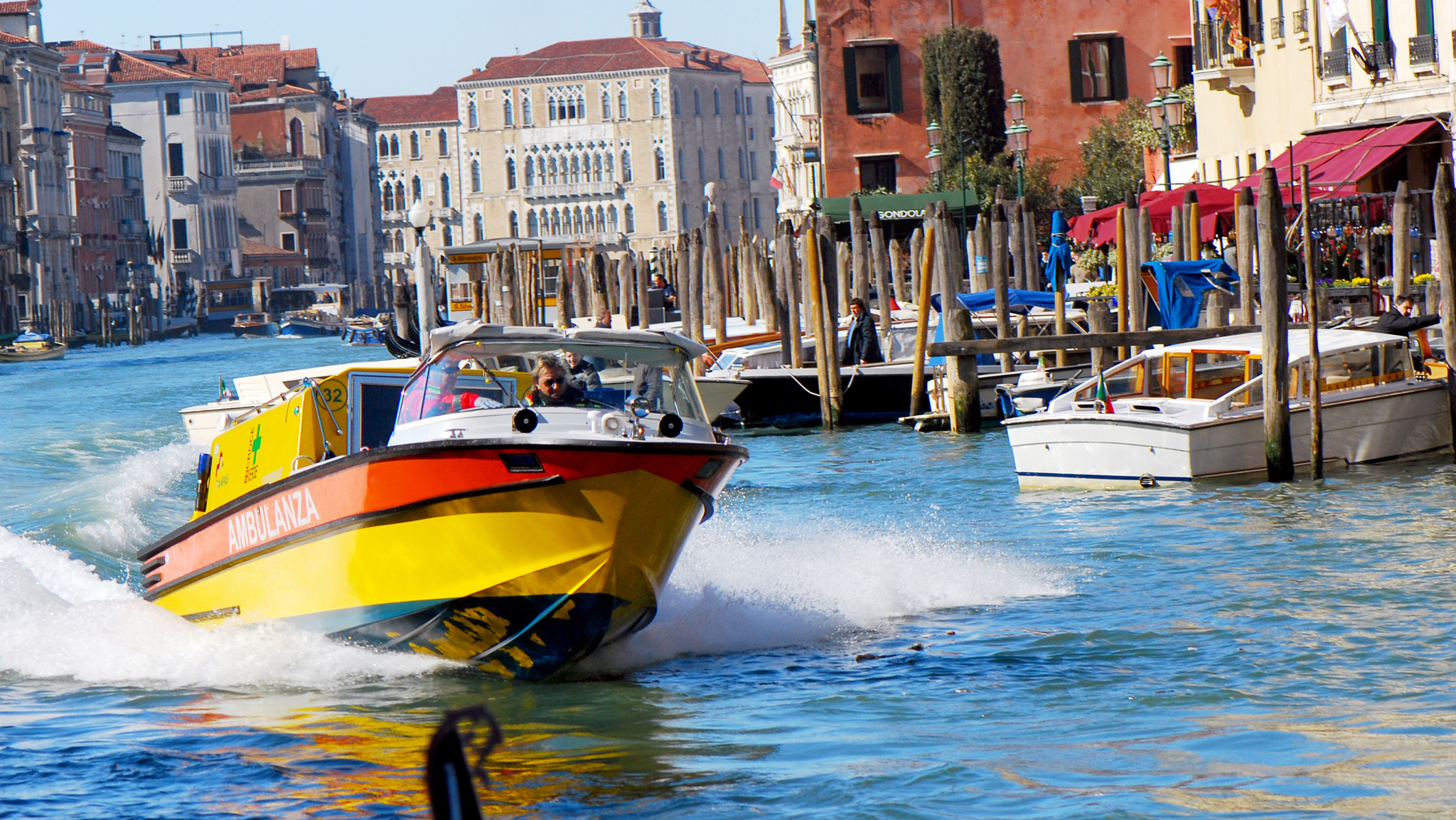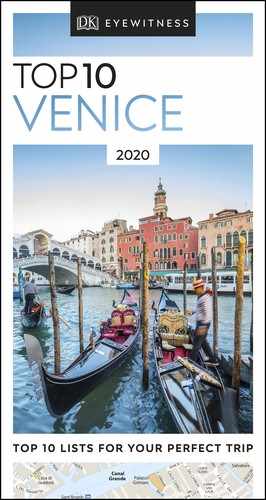WATERCRAFT OF VENICE
1. Gondola
These are most often seen transporting tourists around the canals. A larger version (traghetto) is also used for the cross-canal ferry, while the smaller gondolino is a slender racing craft.

Typical Venetian gondola
2. Vaporetto
Strictly speaking, this is the capacious rounded waterbus, now also seen in an “ecological” electric model. A slimmer motoscafo serves the outer runs and narrow canals with relatively low bridges.
3. Sandolo
A slim, lightweight boat perfectly suited to hunting and fishing in the shallow waters of the lagoon, not to mention racing. Painted black, these “imitation gondolas” can deceive tourists on the back canals.
4. Topo
The most common barge for transporting goods around the canals, the topo can be seen loaded with everything from washing machines to demijohns, often with a live dog “figurehead” on the prow.
5. Sanpierota
This flat-bottomed rowing boat is named after the inhabitants of San Pietro in Volta in the southern lagoon. Once used for transporting fish to Venice, nowadays it is fitted with an outboard motor and photogenic oblique sail.
6. Bragozzo
With its gently rounded prow and stern, this brightly coloured sailing boat was traditionally used for fishing by the inhabitants of Chioggia.
7. Fire Boat
From their station near Ca’ Foscari, the red launches are called both to deal with fires and to rescue submerged obstacles and crumbling façades.
8. Garbage Vessel
The city’s hefty waste-collecting AMAV barges trundle over the lagoon with the day’s rubbish, in addition to carrying out environmental monitoring.
9. Ambulance and Police Launches
These modern craft attract plenty of attention as they roar down the canals – only the emergency categories are allowed to disregard the city’s speed limits.

Ambulance launch
10. Car Ferry
These giants convey all manner of motor vehicles from the Tronchetto to the Lido.
VENICE’S GONDOLAS
The quintessential sleek Venetian gondola has been plying the city’s canals since as early as the 11th century, although it did not take on its present graceful form until the late 1400s. Compared to a mere 405 gondolas on the waterways today, as many as 10,000 were in use in the late 19th century: bridges were once few and far between and gondolas acted as ferries between one island and another, a custom that continues to this day across the Grand Canal by the traghetti. A handful of gondola yards still construct the boats as well as carry out repairs, such as San Trovaso in Dorsoduro. It’s a costly and complex craft – eight different types of wood are needed for a total of 280 pieces to make the asymmetrical craft, 11 m (36 ft) in length and 1.42 m (4.5 ft) in width, at a cost approaching €25,000.

The iron bracket (ferro) on the prow weighs 30 kg (66 lb) to offset the weight of the rower, and adds to the more than 350-kg (770-lb) weight of the gondola. Originally painted in bright colours, the black gondolas that you see today were decreed by the Senate to prevent excessive shows of wealth.

Gondola repair yard
TOP 10 GONDOLA FEATURES
1. Forcola (rowlock)
2. Ferro (prow bracket)
3. Hippocampus (side ornament)
4. Night lamp
5. Bronze stern decoration
6. Ribbed oar
7. Felze (cabin)
8. Gondolier’s foot rest
9. Gondolier’s striped shirt
10. Gondolier’s straw hat
